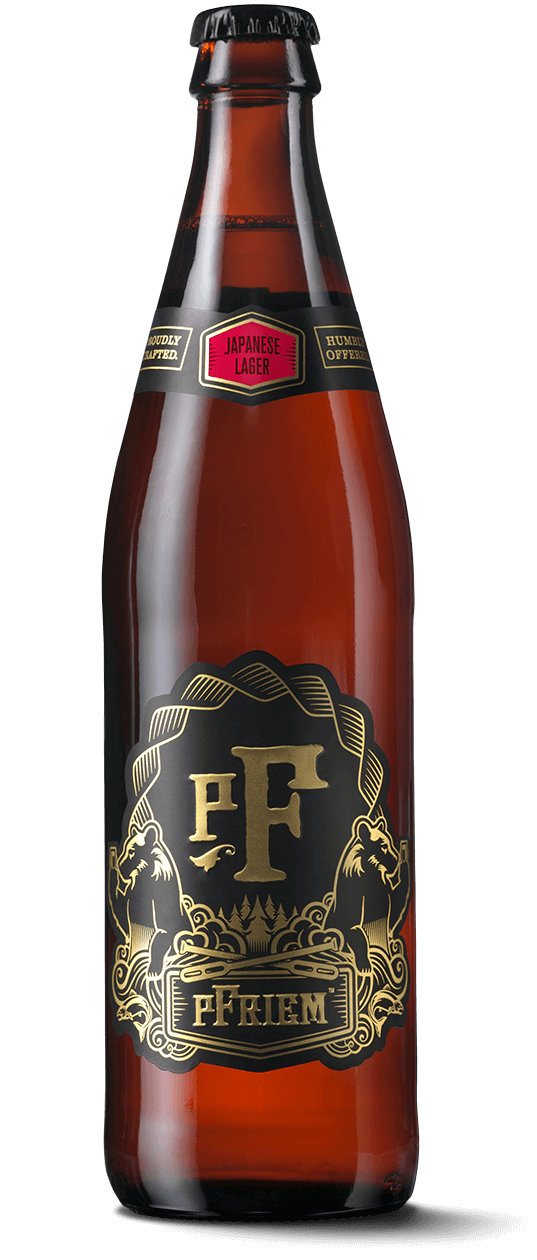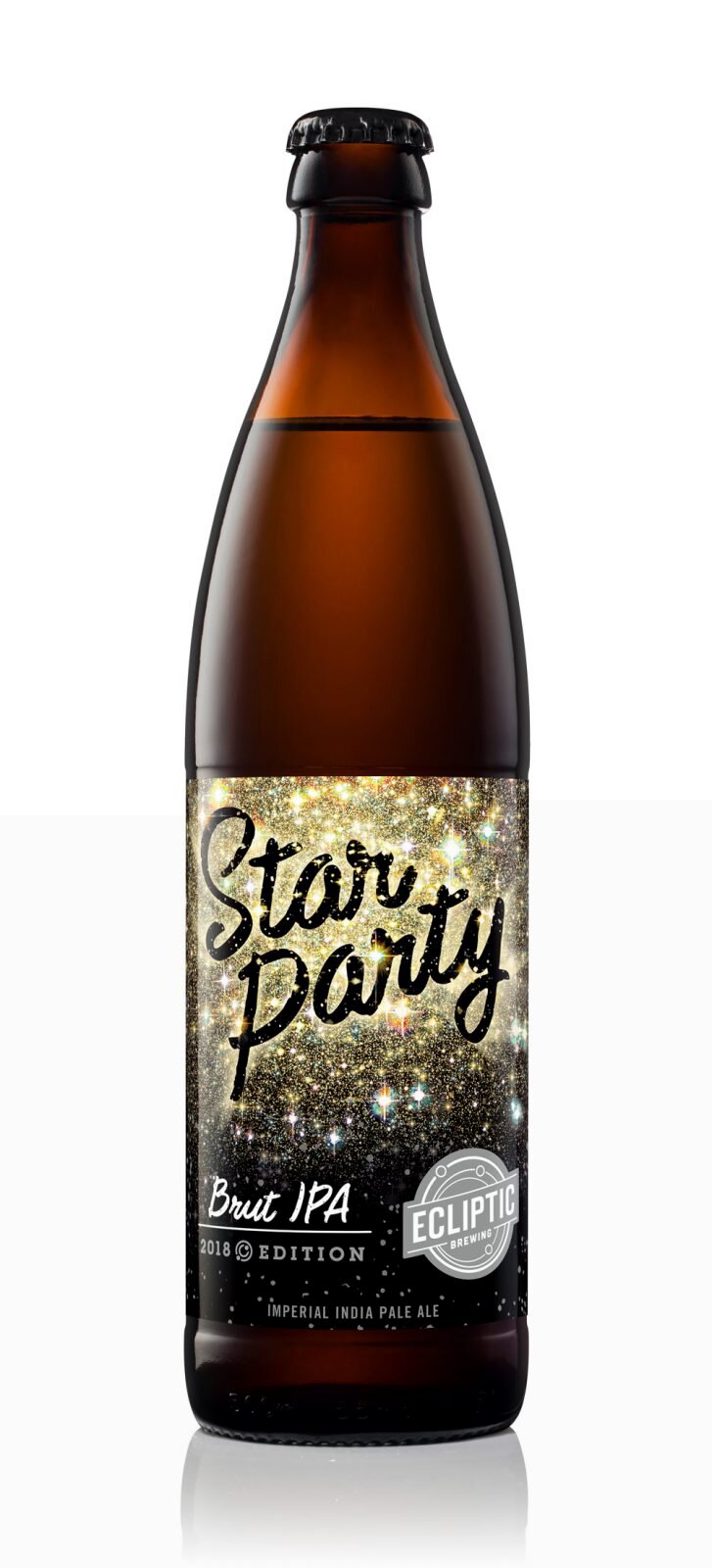5 Hottest Beer Trends of 2019
In which we highlight the five hottest beer trends of 2019 that we predict will continue to play out into 2020.

There are many trends playing across the craft beer landscape, some lasting for years and others for months (glitter beer.) Many fads come and go but it's difficult to tell what will catch on and have legs. These are the five hottest new trends of the year you will likely continue to see a lot of.

Japanese Rice Lager
The burgeoning Japanese Rice beers are actually about as Japanese as Mexican-style Lagers are Mexican, which is to say not really at all. You may see these listed as simply a Japanese Lager but it's the rice component that makes it unique. Much like the Mexican-style Lager often has an adjunct of flaked corn, the Japanese Lager uses rice to similar effect. Like flaked corn, rice adds fermentables that lead to a drier and crisper beer while leaving behind a light, almost undetectable flavor that's quite different than flaked corn. Think of this as the craft equivalent to macro lagers, just as light and crisp but with better flavor.
Some examples: pFriem Japanese Rice Lager, Wayfinder Dry, and Immortal Coil Cold IPA. Breakside White Tea Lager, Great Divide Samurai Rice Ale, Labrewatory Max Indicus Rice Lager, and the just recently released Von Ebert Reis Pils.

Italian-style Pilsner/Dry-Hopped Lager/IPL
The Italian Pilsner is gaining traction on the west coast largely because of last year's Terrifico Horror Pils from Wayfinder, Modern Times and Heater Allen, but that owes a debt to Firestone Walker's Pivo Pils. Both beers were inspired by Birrifico Italiano Tipopils dry-hopped Pilsner, which was the inspiration for Pivo Pils—one of the most award winning lagers of recent years. An Italian Pils is basically a dry-hopped lager with new school hops. Even older hoppy lagers like Heater Allen Pils typically use classic German hops or American versions of them which are lower alpha acid and more spicy and floral. The new wave of dry-hopped lagers use new German varieties like Hallertau Blanc and Mandarina Bavaria, or even popular tropical American varieties like Galaxy and Citra.
The Brewers Association has folded these beers into the IPL (India Pale Lager) category, which makes sense but also sells this trend short. IPL has been around for a while but got a bad rap, mostly because they were largely just IPAs fermented with a lager yeast at too warm a temp. The new school Hoppy Lagers or Italian Pilsners take the base of a classic crisp lager and dry-hop them like an IPA, so the body is still crisp, light, bready and drinkable instead of malty, strong and bitter like most IPLs.
Some local examples include the new Everybody's Brewing Green Ice Pilsner, Von Ebert Brewing and Breakside Brewery collaboration Lucia Italian Pils, Sunriver Transition IPL, and the new Occidental Brewing and Heater Allen Brewing Northwest Pilsner. A more widely available example is Stone Brewing's Tropic of Thunder Lager, now available in 12oz and 16oz cans.

Brut IPA (with flavorings)
The Brut IPA is not dead yet, and seems to be getting more of a push than ever by large breweries this summer. If you think you know Brut IPAs, don't be so sure. While the signature dryness should be common in all examples, they are coming out clear and hazy, effervescent and not so bubbly. But the biggest changes are both in yeast and in additional flavorings.
Brut IPAs develop their signature dryness from the addition of an enzyme that breaks down starches and sugars to become even more fermentable. More and more brewers are playing with champagne yeast for similar effect; rather than use enzyme, the champagne yeast ferments a drier beer by itself but can produce some of its own strong flavors, including cider-like flavors and more boozy alcohol notes. As brewers play with champagne yeast, they are getting a better handle on it.
Perhaps the biggest change is adding fruits and herbs to Brut IPA. pFriem Family Brewers has tried a number of different flavors, like Raspberry, and Ecliptic recently did one with lavender and lemon. These extra flavors add complexity and flavors that distract from or overcome some of the less desirable Brut IPA flavors like thinner body and harsher flavors.
Some breweries are even making Brut IPA as lager, such as Breakside's Sparkler series, with different single fruits fermented with enzymes in a hoppy lager. Look for Gigantic Brewing's Starry Eyes Brut IPA or their Mikkeller collab Fucking Classy Brut IPA in the more classic and champagne yeast fermented styles. For fruited Brut IPA check out Breakside's current Strawberry Sparkler, Ecliptic's Star Party (lavender and lemon), and Vagabond Brewing's Disco Panda.

Rosé Inspired Beers
Beers and ciders playing on the popular Rosé wine craze really took off last summer and surprisingly hasn't burnt out yet. We wrote extensively about the Rosé craze and its origins last summer, and suggest you read that primer. But as a summary, Rosé in both wine, beer and cider primarily stands for the pinkish rose color rather than an accepted style or ingredient.
There are actually three methods to making Rosé wines, and brewers and cideries have far more ways of making their product taste fruity, sometimes floral and always with a pinkish hue. Commonly, you take a light beer such as a gose, blonde, saison, or golden ale and add such ingredients as hibiscus, red wine grapes, raspberries or even rose petals. Naturally a pinkish Rosé flavored with raspberries will taste quite different than one made with hibiscus or a base beer of saison much different than a blonde. This is one trend we thought would be burning out by now, but is going as strong as ever.
Hot new examples include Oskar Blues new Rosé for Daze which uses magenta colored prickly pear cactus with hibiscus, and Portland Cider's Pineapple Rosé. Both Avery Brewing with their Rocky Mountain Rosé and Firestone Walker Brewing with Rosalie are using real wine grapes for flavor and color.

Nordic (Kveik) Beer
The Nordic beer trend caught us by surprise as more and more beers brewed with the recently isolated and propagated Kveik strains (Kveik is a Norwegian word for yeast passed down through generations). It first hit our radar with a collaboration with Lanikai Brewing, Sleight Labs and Imperial Yeast called Everybody's Hi. In reality, this is not so much a style or even a single yeast strain but a family of strange yeast strains that date back hundreds of years of brewing history in Norway.
Before brewers had the methods to isolate single strains, farmhouse brewers would use old cloths or wood kveik rings to cultivate and preserve their yeast. Kveik can be easily dried out and stored and then rehydrated by dipping into wort. It's been reported that a dry and dormant kveik can kick into active fermentation in as little as 30 minutes. The kveik strains are similar to other farmhouse/saison yeasts and can develop fruity, spicy and funky flavors. Unlike other farmhouse strains it can ferment upwards of 90-100 degrees, and the flavor does not actually change that much. It's a surprisingly resilient yeast that can handle high temperatures, and is an extremely good flocculator. So it's obvious why brewers are attracted to this versatile and unique strain that's great for farmhouse ales but flexible enough to be used for a variety of ale styles.
Kveik/Norwegian examples include Everybody's Brewing's Everybody's HI, Deschutes The Kveik Freak, Threshold Brewing Jens Bailed Grisette, Upright Brewing Two Tone, Gigantic Brewing Discombobulated, Brothers Cascadia Scandinavian Smackdown, Urban Family Brewing World Tree Kveik IPA, Reubens Brews Nordic Haze, and The Wheel's Scando.

